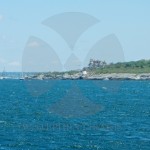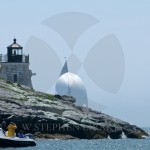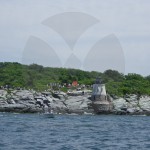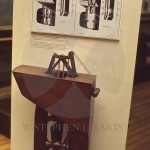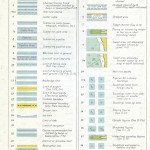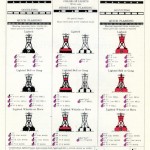OF ALL BY EXPERIENCES OCEAN RACING THIS RACE WILL STAND OUT. WE MANAGED TO HOOK A WEATHER SYSTEM AND RIDE IT ALL THE WAY ACROSS THE OCEAN. USUALLY YOU NEED A LARGER BOAT OR A MULTIHULL TO STAY KEEP UP WITH THE SYSTEM.
Tag: navigation
DAY 26 TROPHEE JULES VERNE
BOTH IDEC AND SPINDRIFT ARE CLOSE TO THE “GHOST”. IDEC 30 MILES BEHIND AND SPINDRIFT 30 MILES AHEAD. AT THE SPEEDS THEY ARE SAILING THIS CAN CHANGE VERY QUICKLY. WITH ABOUT 9,000 MILES TO THE FINISH THE DECIDING FACTOR IN THE RACE WILL BE WHO NAVIGATES FROM THE EQUATOR TO THE FINISH WITH THE FASTEST TIME.
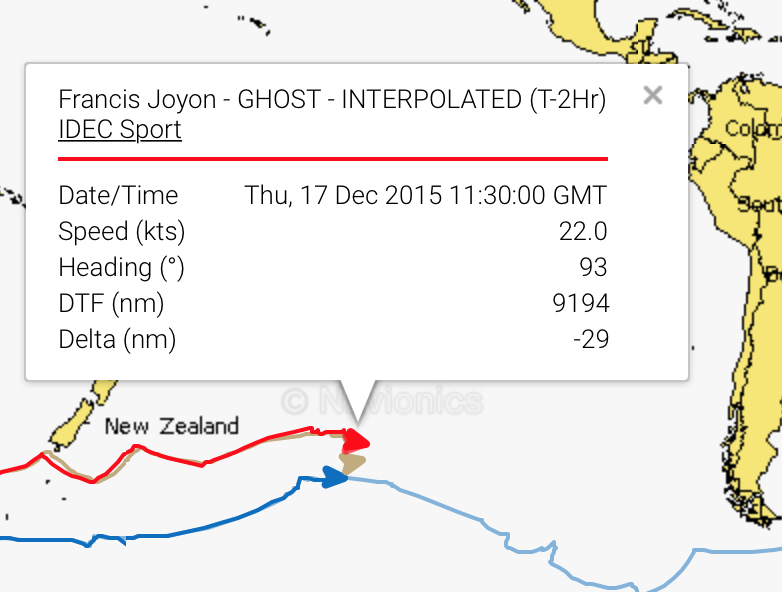
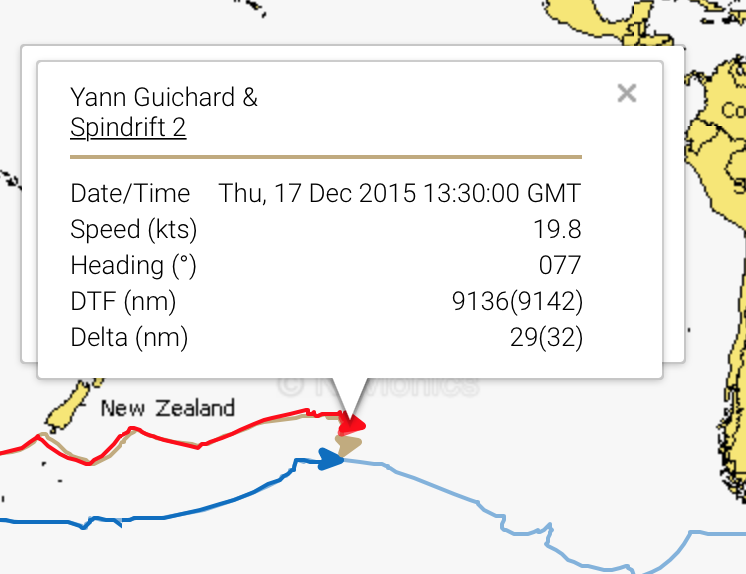

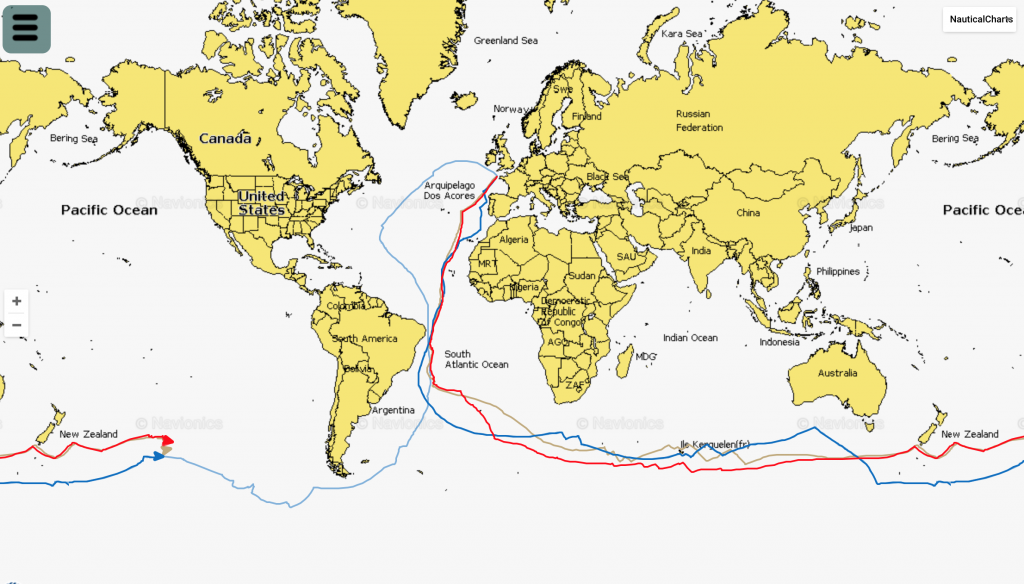
NOTICE TO MARINERS
When I was very young I subscribed to the notice to mariners and read every newsletter. Obviously things have changed over the years. The Brenton Reef Lightship was replaced by the Tower and both no longer exist. Personally, I would not make the proposed change. I have stories to support my beliefs. At the finish of an Annapolis-Newport race in heavy fog at night,I knew what to look for and helped guide us (Boomerang) across the finish line, which was a bearing from Castle Hill. “Flyer” which went on to win the round the world race that year was not so lucky, she found kettle bottom and had to be pulled off the rocks. (The navigator can to see me,he was so shaken by having missed the finish, he eventually withdrew from the round the world race)
Good afternoon fellow mariner,
The Coast Guard is considering making a change to the sound signal currently installed on Castle Hill Light, and we seek your comments on this proposed change.
The proposed change involves removing the traditional horn that sounds only during fog or periods of low visibility (such as snow), and installing an “on-demand” foghorn that is activated only when needed by mariners, who would activate the foghorn signal via VHF radio.
There would be no other change to the foghorn’s characteristics, i.e., the new horn would sound at the same decibel level as it does now, and would sound at the same interval (1 short blast every 10 seconds). During times of reduced visibility the new fog signal would be activated by turning to a CG-designated marine VHF-FM channel and keying the microphone five times consecutively, which would sound the foghorn for 45 minutes.
This change would, in the Coast Guard’s opinion, continue to provide an effective aid to navigation for mariners while also providing a better quality of life for residents in the nearby areas of Newport and Jamestown who are occasionally subject to long periods of time when the foghorn may be sounding, yet there are no mariners in the area actually using the signal to navigate.
Radio-activated foghorns are not new. One has been installed and in use since September of 2008 at Hog Island Light in Narragansett Bay. We have received no adverse comments from mariners regarding this aid. Also, radio-activated foghorns are used exclusively in U.S. waters of the Great Lakes, where there are no longer any traditional foghorns in use. Radio-activated foghorns can provide an effective aid to mariners, have less initial and maintenance costs than traditional foghorns, and reduce noise for nearby residents.
Please provide any comments you may have regarding this proposed change to Lieutenant Brock Nelson of Coast Guard Sector Southeast New England, who may be reached at 401-435-2348, or Brock.E.Nelson@uscg.mil. The deadline to submit comments is 31 October 2012.
Please feel free to pass this e-mail on to others who may have an interest in navigation safety and the fog horn at Castle Hill Light.
COASTAL NAVIGATION, NARRAGANSETT BAY
This weekend is the annual spring regatta of the New York Yacht Club. Next weekend is the start of the Bermuda Race.
Navigation has changed, like everything around us. Does anyone even reference chart symbols anymore? Almost everything one needs is on a computer screen now. GPS has made old skills, well old. While I still marvel at the past and the history of navigation. GPS tells one instantly the effect of the Gulf Stream, as example. No more dipping for bucket of water over the side and taking the temperature; which might have told one whether or not one was in the stream. But not until the next sun sight or star fix would one know what the effect of where one was; positive or negative. By then it was too late.
I included the photo of the retractable propeller designed in the 19th century just as a reminder that not so much has changed. Had the materials we have today been available to our predecessors, they would have reveled in the possibilities.
NEW STORY
So all the stories I posted have been just that; stories. As is often the case, speaking out before all the information is in. The conversation has just taken an abrupt change of direction.
what happened
.png_sml.png)
The tracker doesn’t lie: The Hunter 37 Aegean, which was feared to have been run over by a large commercial vessel during the Newport to Ensenada race, actually ran aground on the North Coronado Island, killing four crew members. A nasty bit of rock, and with the decent sized swell running during the race, it is not hard to imagine the sort of carnage rendered, at least to the boat. We still aren’t sure how the hell they ended up there though… Click here to expand on the track.
05/01/12
LIGHTSQUARED
Sail-World.com News
LightSquared and the USA’s GPS system – is the alarm warranted?
7:21 PM Sat 11 Feb 2012
| Spectrum policy – necessary for all nations’ . |
On January 31 Sail World reported that ‘alarm and anger were growing in the marine industry as LightSquared threatened the USA’s GPS system’ (See Sail-World story). In a previous story Garmin was quoted as saying ‘If GPS were compromised it would affect every GPS-dependent piece of equipment.’
Now keen sailor, eminent Doctor of Engineering and Spectrum policy expert, Michael J. Marcus, has weighed into the discussion with some salient facts:
As a long time sail boat owner (Jeanneau 32 Attalia based near Annapolis) and a radio spectrum policy wonk (Wi-Fi and Bluetooth began from rules I initiated at FCC in the early 1980s), I have been troubled by statement such as these made in Sail-World’s article on the subject.
However, these pale compared to statements made by Garmin at the beginning of the article or by BoatUS, the major boating membership association in the US to which I belong.
First, what is the origin of this controversy? Cellphones and broadband are becoming key parts of our societies and economies. Today’s systems are rapidly running out of capacity. While the cellular industry exaggerates additional spectrum as the only possible cure for this capacity problem, it certainly is a key tool. FCC and its counterparts in other countries are all trying to find more radio spectrum for such services.
About 20 years ago it appeared that ‘mobile satellite service’ or MSS, e.g. Inmarsat and Iridium, would be a key telecom service everywhere the world and that global spectrum had to be reserved for it. Advances in both terrestrial and satellite communications have proved this to be wrong in a key aspect: MSS spectrum is now very lightly used in populated areas and new technology allows the same spectrum to be used for MSS in rural areas and over oceans while used for cellular-like services in populated areas – effective ‘recycling’ otherwise unused spectrum in areas where it is sorely needed!
One of the MSS bands involved is just below the GPS L1 band used by commercial GPS units. In the US, FCC has authorized use of this band for terrestrial cellular services (FCC jargon for this is Auxiliary Terrestrial Component or ATC) since 2003 and the company now called LightSquared has been authorized since 2004.
Now there is some dispute about details of the early FCC decisions and how many base stations were allowed under them, but it is clear that base stations were allowed next to the GPS band since 2003 and that the civil GPS supplier community paid little attention to the fact that GPS would be having a new neighbor with much stronger signals in some places than the original MSS signals.
Real receivers of all types do not have infinite ability to reject strong adjacent band signals. Such rejection requires careful design and the amount of rejection possible increases with time as filter technology improves. As long as the MSS band had no cellular base stations in it, little rejection was needed and GPS manufacturers did not have to incorporate the latest filter improvements which incurs both design and retooling costs.
Thus it appears that the GPS industry has not pressed the filter manufacturers for the latest technology as the cellular systems in nearby bands have. As a result many GPS receivers have a lingering vulnerability to strong adjacent band signals that results from GPS manufacturers ignoring policy changes made in the US almost a decade ago!
| Spectrum chart – .. . |
In June 2011 after an initial rounding of GPS receiver testing, LightSquared changed its plans to move farther away from the GPS L1 signal to 1526-1536 MHz which is 23 MHz (almost 4 US TV channels or almost 3 European TV channels) away from the lower edge of the GPS L1 band at 1559 MHz. (See Chart left)
Rather than admit any responsibility for this and focus on a reasonable transition scheme, the GPS industry has chosen to make what a friend who is a GPS pioneer has described as a Jonestown-style ‘suicide pact’. (The Garmin quote at the start of this article is an indication of this approach.) The industry has enlisted lawyers and PR firms and a broad variety of ‘fellow travellers’, such as BoatUS, to say the ‘sky is falling’.
It has even convinced the Air Force general who is responsible for the GPS satellites to testify that the LightSquared system would impact military GPS systems that were supposed to be jam resistant. Without getting too technical, if such a 100 watts transmitter 23 MHz away from the edge of the GPS band could impact military GPS receivers, imagine what a bad guy could do with a similar or stronger jammer transmitter inside the GPS band? And it is well known that simulated GPS signals are even more effective jammers, watt for watt, than noise or cellular-like signals.
Military sources have told me that the general’s testimony on military equipment susceptibility actually dealt with obsolescent equipment from the early days of GPS that is still in inventory in small quantities and vulnerable to any undesired signal.
But real boaters know something that lawyers and PR firms apparently don’t: boats float on water.
The LightSquared/GPS controversy, especially after June 2011 move farther away from the GPS band, is an issue with GPS receivers that both have inadequate adjacent band rejection and are within a few hundred meters of a possible LightSquared base station – not a typical boating scenario but never mentioned in BoatUS material on the subject.
In trying to use the public spectrum resource for the maximum overall public good national regulators like FCC regularly have to repurpose bands as technology and society’s needs change. Such repurposing sometimes impacts both incumbent users of the band, not so in this particular case, or users of neighboring bands.
For example, several times in the last few decades TV spectrum in many countries has been repurposed for mobile communications. The usual solution is a transition scheme that balances the costs and benefits of the change and allows affected incumbents users time to adapt to the new change.
The GPS industry and its fellow travelers appear to have no interest in such a transition that might make them admit to design errors in the past decade. Such a viewpoint could result in spectrum gridlock that prevents future repurposing of all bands. This issue is further complicated because the issues lies squarely on the fault line between the jurisdiction of FCC and a separate coequal agency, NTIA, that regulates federal government spectrum use.
In a reasonable transition scheme the base stations could be designed to prevent high signals in all navigable waters during a period in which GPS receivers improve – but the GPS manufacturers and BoatUS don’t want to discuss transitions and the overall public interest in spectrum use. They have dug themselves into policy hole and demand only total victory!
How did BoatUS reach this position and continue to maintain it after the LightSquared proposed to move further away from GPS? Multiple inquiries to BoatUS from this member have received no clear response other than vaguely siding with Coast Guards and industry. Did BoatUS use knowledgeable members in reaching and reviewing its decision? Like the boy who cried wolf, expressing unfounded fears to government regulators harms the credibility of the boating community in other regulatory decisions that could be more important to boaters.
Sail World readers outside the US need not be concerned about this issue as it is purely a domestic US issue and individual countries have the discretion to make such decisions within their own territory under the terms of Article 4.4 of the ITU Radio Regulations.
However, all GPS users might want to press GPS manufacturers about whether they are using interference rejection technology comparable to what cell phones in nearby bands use.
GPS units are now sold in multimillion unit quantities so they can afford contemporary technology filters that usually cost under $1 in such production quantities. (Note these are marginal costs for new units, retrofitting existing units is usually much more expensive.)
But decide for yourself what the issues are in this controversy and how we got to where we are. Here is information from the opposing sides:
…and for masochists & policy wonks:
All FCC filings received:
Early filings (Before 06/28/2011)
Later filings (After 06/28/2011)
About Michael J. Marcus:
Michael Marcus is both a sailor and a technical spectrum policy specialist. He has a doctorate in electrical engineering from MIT, worked almost 25 years at FCC on spectrum policy issues, and was elected a Fellow of the Institute of Electrical and Electronics Engineers for his leadership in spectrum policy. For more information about Dr Marcus, including his complete CV, please go to Marcus Spectrum Solutions LLC

